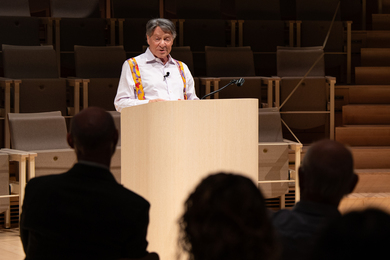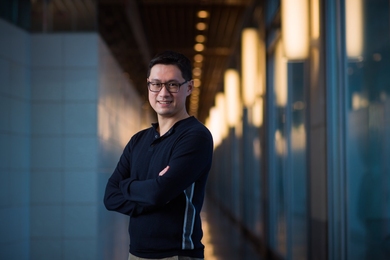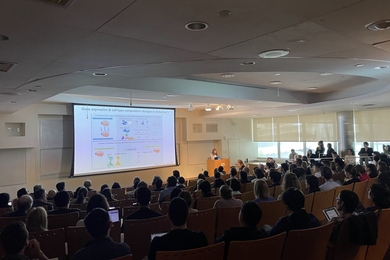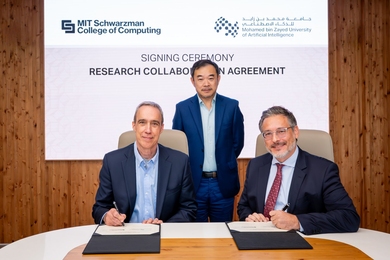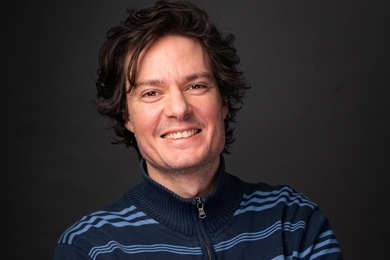A Founders Group with faculty, administration and student members has been established to provide guidance and feedback to Stephen Holl, architect for the new undergraduate residence, as well as to define the intellectual and social program for the residential community. In doing so, members will be guided by the report of the Task Force on Student Life and Learning, which calls for an integration of academics, research and community as the basis of an MIT education.
The group, which will initially be chaired by Rosalind Williams, dean for students and undergraduate affairs, will include five faculty members--Alan Brody of music and theater arts, Suzanne Flynn of foreign languages and literatures, Linn Hobbs of materials science and engineering, Leon Glicksman of architecture and mechanical engineering, and Candace Royer of athletics--as well as Dean Andrew Eisenmann and seven students.
Student members will be freshmen Rima Arnaout, Tina Lin and Jeffrey Roberts; Walter Holland and Joshua Randall, both sophomores in electrical engineering and computer science; Anne McLeod, a junior in civil and environmental engineering; and Jonathan White, a junior in biology. They are seven members of a larger group who were involved in initial planning for the residence during the fall, or who responded to an appeal from the Undergraduate Association for volunteers.
All students who have expressed interest in the program of the new residence are invited to become part of an auxiliary student committee. In this respect, Dean Williams hopes the Founders Group can follow the model of the Task Force. Student members of that group met regularly with a larger, auxiliary Student Advisory Committee, which eventually had a decisive effect on shaping the final Task Force report as well as publishing its own report.
In its advisory role, the Founders Group will be guided by the findings of earlier committees and teams that have already been involved in programmatic and design planning for the residence, including the 11 teams who submitted ideas in last month's IAP residence design program.
Members of the group will also keep in close contact with representatives of other student residences including fraternities, sororities and independent living groups, so initiatives connected with the new house can inspire similar initiatives in existing residences. They will also help faculty members understand and commit to regular, productive student-faculty interactions in the new residence.
Once the architectural design is completed, the Founders Group (whose student membership will evolve over time) will continue to have input on what the residence will be like. Among the priorities they will emphasize is environmental sustainability in design, construction and use of the building.
"This should be a model residential learning community, one that fulfills the recommendation of the Task Force on Student Life and Learning that residential life at MIT needs to contribute to and support the academic and research activities of the Institute," Dean Williams said in a letter to prospective members. "The goal of the program should be to provide a rich, integrated, intense and enjoyable educational experience for all the residents."
The group will seek to attract other students, faculty and staff who want to invest their time and energy into the success of the residence, with the expectation that some of them will eventually choose to live there, she said.
"The construction of this new residence--in both the physical and the social sense--is one of the most exciting projects at MIT in this generation. We have an opportunity to redefine and revitalize the vision of an educational residential community appropriate for MIT, in a way that will serve the Institute well into the next century," Dean Williams said.
A similar Founders Group chaired by Professor Philip S. Khoury, dean of the School of Humanities and Social Science, will be formedto guide development of a planned graduate residence.
A version of this article appeared in MIT Tech Talk on February 10, 1999.
